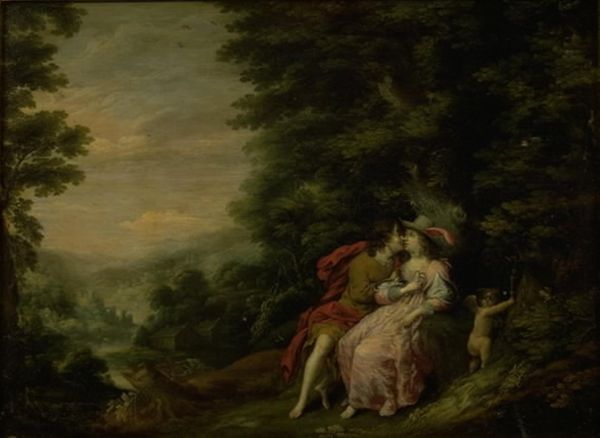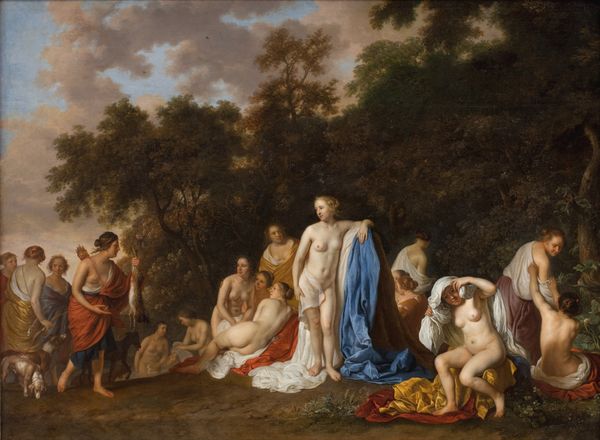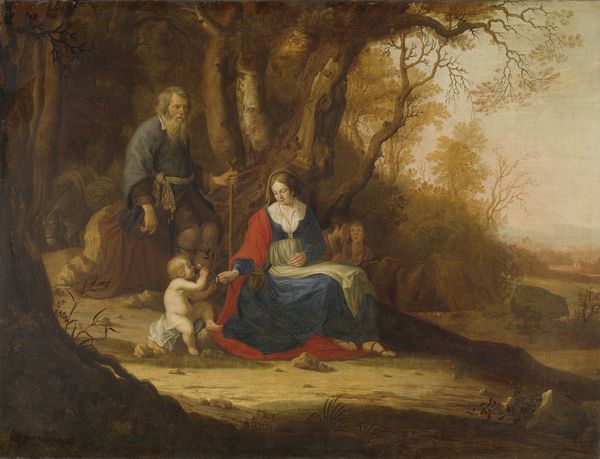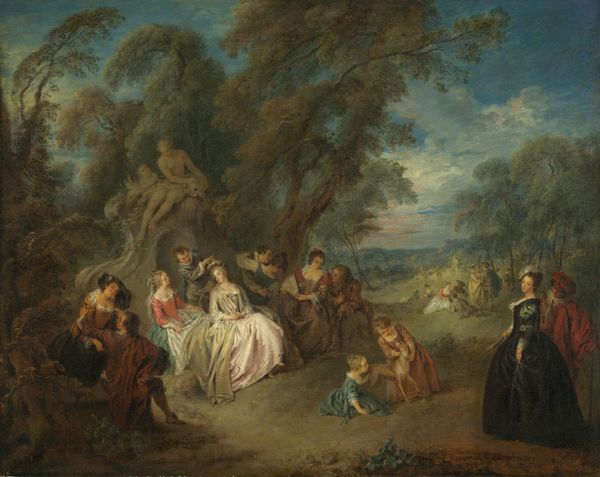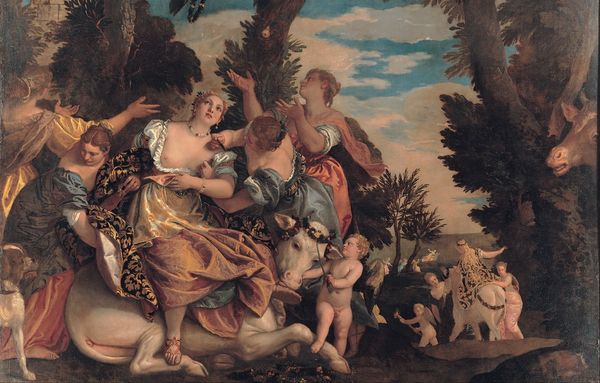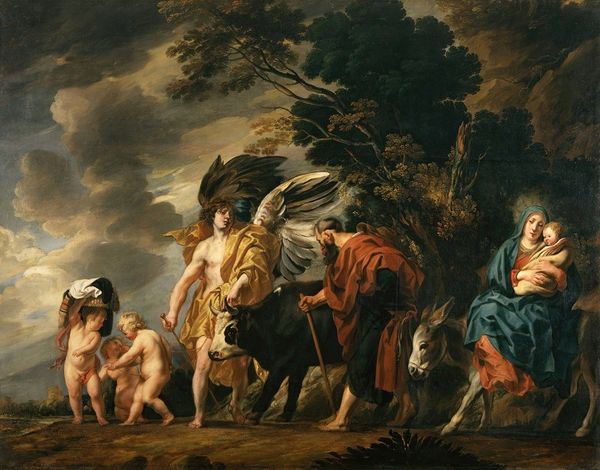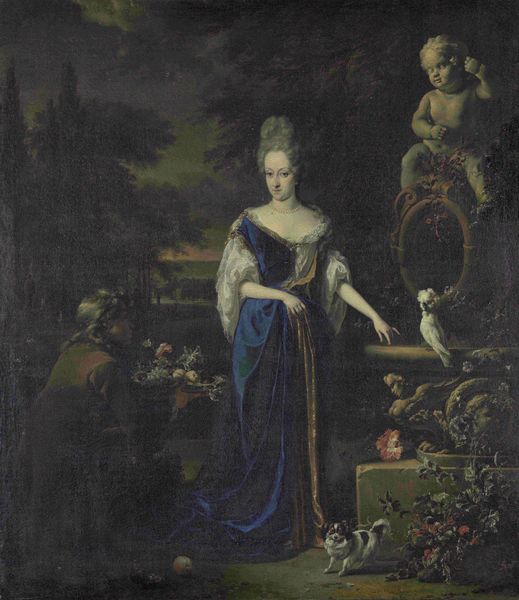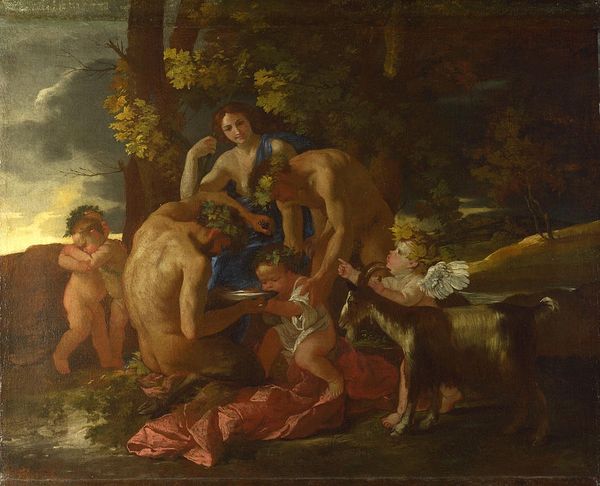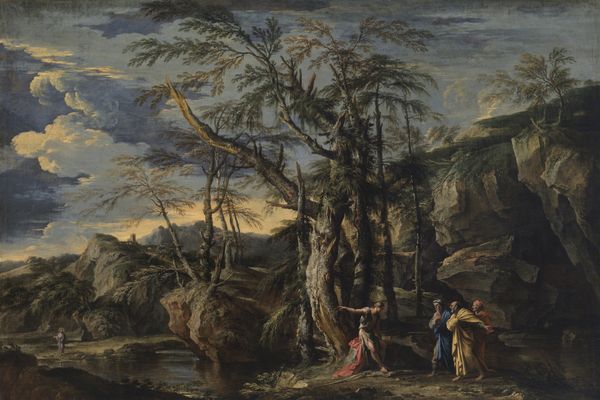
Double portrait of a young couple as Granida and Daiphilo c. 1640 - 1670
0:00
0:00
janmijtens
Rijksmuseum
painting, oil-paint
#
portrait
#
baroque
#
painting
#
oil-paint
#
landscape
#
figuration
#
oil painting
#
genre-painting
#
history-painting
Dimensions: height 112 cm, width 143.5 cm, height 119 cm, width 151 cm, depth 7.5 cm
Copyright: Rijks Museum: Open Domain
Editor: Here we have "Double Portrait of a Young Couple as Granida and Daiphilo," an oil painting from circa 1640-1670 by Jan Mijtens, housed here at the Rijksmuseum. I’m struck by the contrast between the shimmering fabric of Granida's dress and the humble attire of Daiphilo. What can you tell me about the story behind this piece? Curator: The painting offers a glimpse into the consumption habits of the wealthy. Here, we see an elite couple playing dress-up as characters from P.C. Hooft's play, *Granida*. Notice the painstaking detail Mijtens invests in representing the textures of their clothes—the roughspun wool of Daiphilo’s cloak compared to the luxurious sheen of Granida’s satin. The artist emphasizes not just appearance, but also the production of these goods, and how the Dutch Golden Age trade fuelled access to such finery, enjoyed for their theatrical performance. How do these textures speak to you? Editor: I hadn’t considered the economic factors influencing even their choice of clothing in the portrait itself. The woman's finery seems almost a commentary on the character's wealth within this artistic tableau. Was there a societal element as well, perhaps commentary on class? Curator: Exactly. Think about the labor required to create these textiles, from the raw materials to the finished garments. Mijtens doesn't shy away from portraying this indulgence, yet elevates the genre of portraiture. He asks us to examine how the material world, created through human work, shapes our very identities. What statement are these consumers making through their sartorial choices, immortalized on canvas? Editor: I see how this portrait is so much more than just appearances, as it invites considerations about social classes and labor, particularly when it comes to their clothing and setting. I am more thoughtful about considering materials in painting. Thank you! Curator: Indeed. Paying attention to the material history woven into art can unveil fascinating aspects of the past. It certainly enhances one’s viewing pleasure.
Comments
No comments
Be the first to comment and join the conversation on the ultimate creative platform.
